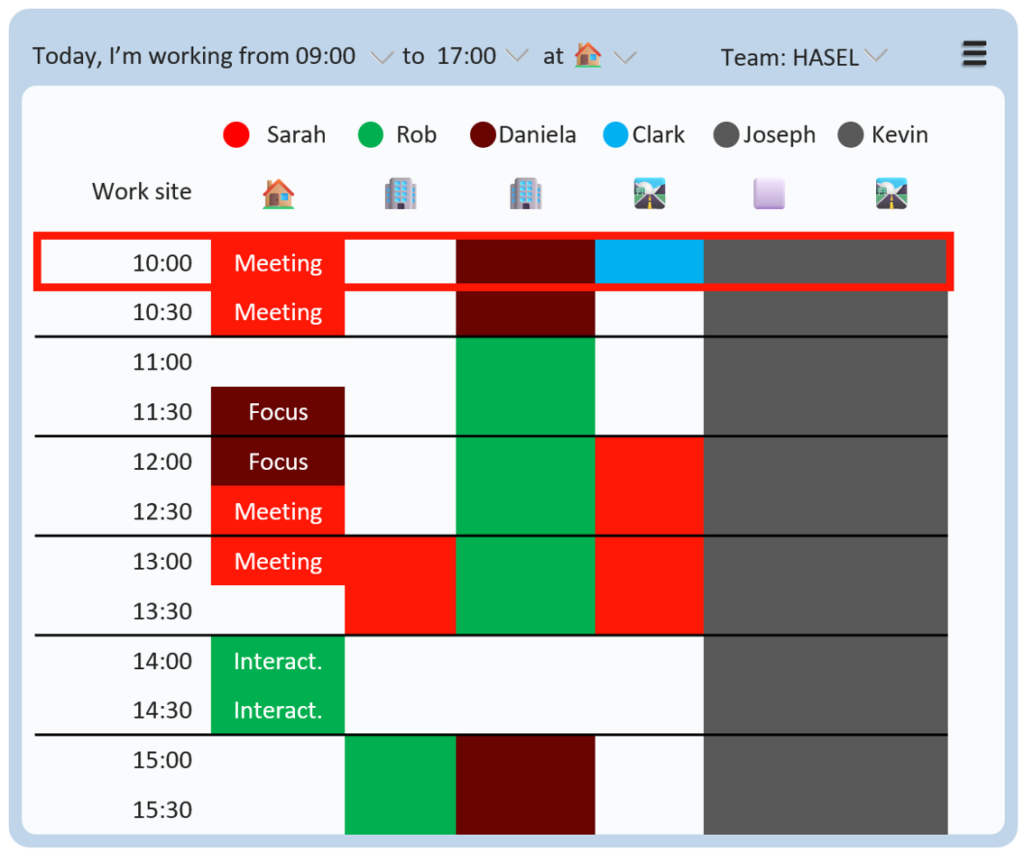Better Balancing Focused Work and Collaboration in Hybrid Teams by Cultivating the Sharing of Work Schedules
Abstract:
In the context of hybrid knowledge work, striking a balance between individual focused work and team collaboration remains challenging. Existing approaches often fail to provide comprehensive and accurate presence awareness, as the necessary information is scattered across multiple applications and is frequently outdated, inaccurate or unavailable. To address this challenge, we introduce FlowTeams, a technology probe designed to (a) unify and combine presence information in one place, (b) cultivate the scheduling of workdays around focused work and collaboration, and (c) provide visibility of the information through both physical and digital presence awareness displays. In a field experiment, we deployed FlowTeams with 48 professionals across 10 hybrid working teams over an average of 6 weeks. The analysis of the collected data shows that the approach increased participants’ awareness of their co-workers’ availability, work hours and locations, and allowed them to better align their work schedules to their team’s, while also structuring their workdays according to individual preferences. Furthermore, the results reveal that FlowTeams successfully mediated intrusive interruptions, enabling participants to significantly enhance their focus when necessary, while maintaining effective, yet less taxing, teamwork. Our work underscores the potential for supporting hybrid knowledge workers in negotiating a better balance between focused work and teamwork.
Further information:






